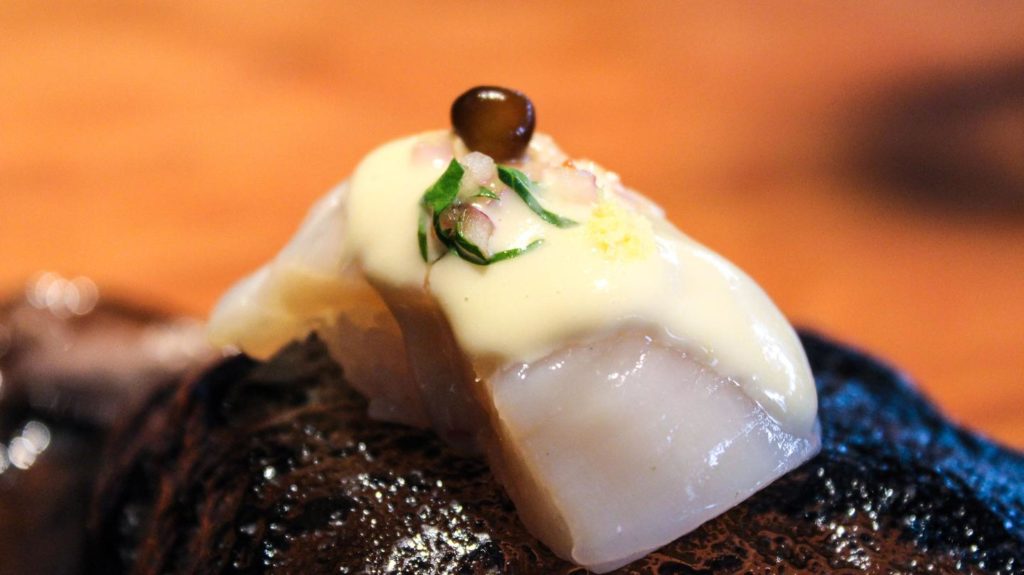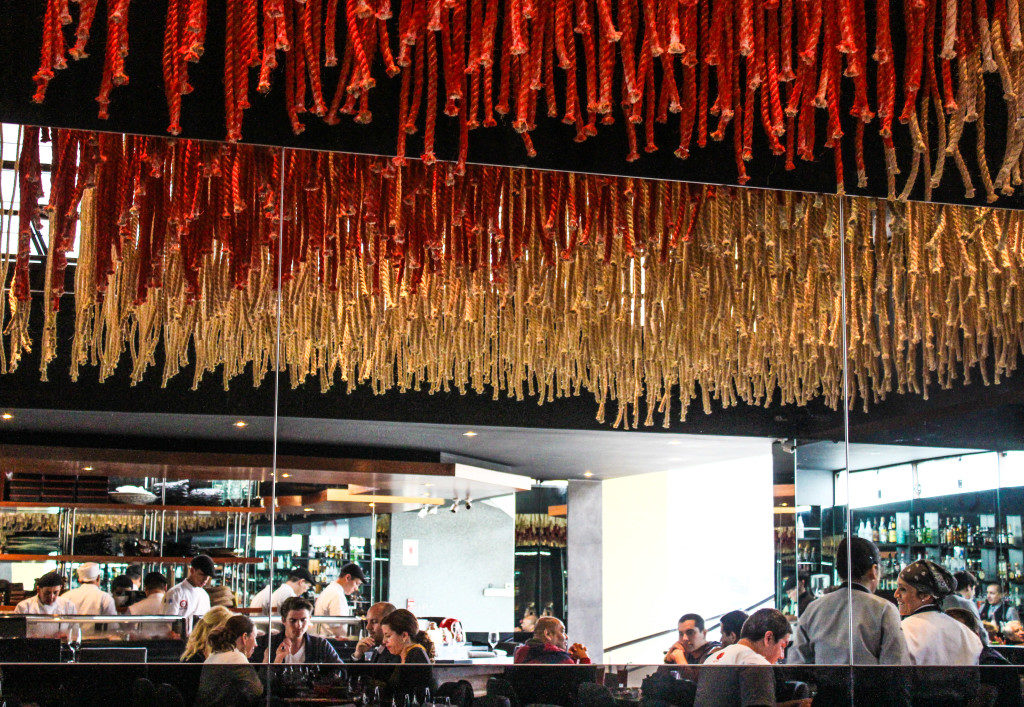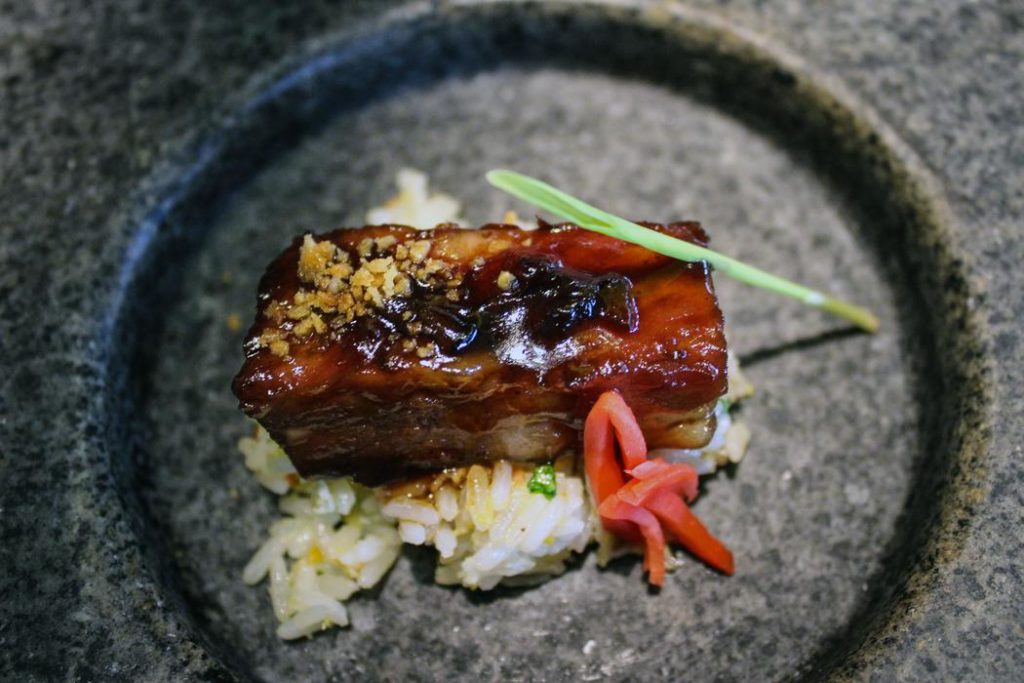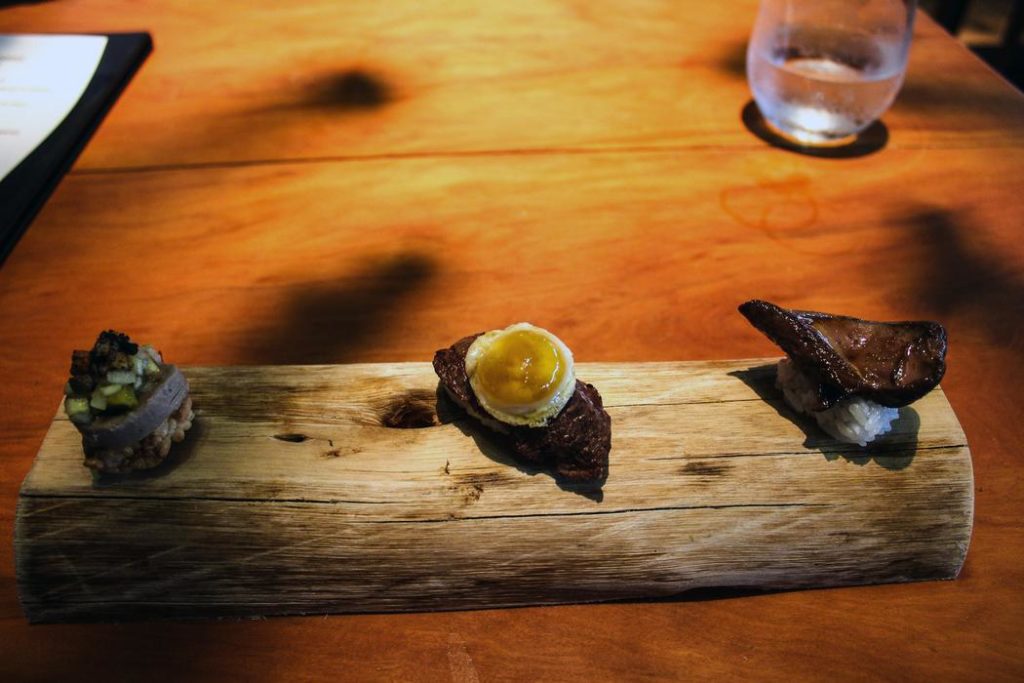 Maido is the delicious love child of Peru and Japan, and also Latin America’s new best restaurant in 2017. A few years ago I wrote about one of my favorite cuisines in the world, Peruvian Nikkei for Vice’s Munchies. Last night at Latin America’s 50 Best Restaurants awards in Bogotá, Nikkei restaurant Maido in Lima took the top spot as the best restaurant in Latin America. Here is a brief history of Nikkei cuisine in Peru and its relationship with Maido’s owner and head chef, Mitsuharu Tsumura.
Maido is the delicious love child of Peru and Japan, and also Latin America’s new best restaurant in 2017. A few years ago I wrote about one of my favorite cuisines in the world, Peruvian Nikkei for Vice’s Munchies. Last night at Latin America’s 50 Best Restaurants awards in Bogotá, Nikkei restaurant Maido in Lima took the top spot as the best restaurant in Latin America. Here is a brief history of Nikkei cuisine in Peru and its relationship with Maido’s owner and head chef, Mitsuharu Tsumura.
Article originally published on Munchies
Mitsuharu Tsumura stood nervously at the baggage claim inside Buenos Aires’ international airport, hoping that his cooler would be next to trot onto the conveyer belt. He spotted a few wet suitcases, a trail of leaking water, and a cooler wobbling around the bend. It was filled with illegal Peruvian contraband: multicolored tubers native from the Andes, an assortment of chili peppers, maca, cushuro, maize, scallops from Paracas, and pejerrey fish—all the essentials. Relieved it had survived the journey from Lima, now came the next worry: how the fuck was he going to get this past customs?
The 33-year-old Peruvian-Japanese chef was headed to showcase his cooking specialty: Nikkei, a cross-pollination between Peruvian and Japanese cuisines. Tsumura was playing the role of Nikkei ambassador—as he often does on such international trips—and that dripping, fishy cooler, his passport.
Nikkei cuisine is gastronomic natural selection at its finest, a flawless spawn of epicurean intercourse. It breeds two master culinary races, both of which possess an age-old history and flaunt superior native ingredients. Japan and Peru may seem like an unforeseen twosome, but the Japanese community has profoundly contributed to mainstream Peruvian society for decades, bestowing a Japanese twist on Peruvian creole home cooking.
Nikkei cuisine transforms local dishes using Japanese flavors and techniques, resulting in its own personality and identity under a distinct Peruvian lens. Over the years, Nikkei has evolved, ranging from Peruvian comfort food sprinkled with Japanese flare, itamaes incorporating local herbs, sauces, and spices to orthodox staples, and a contemporary offshoot pushing creative boundaries to form a completely unique modern-day culinary artform.
Mitsuharu, or Micha as his friends affectionately call him, is considered to be one of the most important chefs not only in Peru, but on an international scale. He has a TV show, a book, Nikkei Is Perú, that is considered by many the authority on Nikkei cuisine, and his pride and joy, restaurant Maido in Lima.

We met on a Wednesday afternoon in 2014 inside Maido, one week after it was ranked Latin America’s seventh best restaurant, according to the World’s 50 Best. We sat underneath an impressive rope installation that covered the entire ceiling of the dining room, which optically illudes to both the Japanese and the Peruvian flag, depending upon which way you look at it. “You have to understand that Nikkei isn’t necessarily Peruvian cuisine with Japanese influence, and it’s not Japanese cuisine with Peruvian influence. It’s the meeting of these two cuisines,” Micha told me before asking a waiter for a pair of chopsticks to use as a prop to visually demonstrate the history of Nikkei cuisine.
Micha’s story is representative of many Nikkei people in Peru, which has the second largest Japanese population in South America. Japanese immigrants first began to settle on Peru’s coastline in the late 19th century after a treaty was signed between the two nations. Thousands of Japanese came by boat to work as indentured servants and agricultural migrant laborers in sugar plantations on coastal haciendas. Instead of returning back to Japan after their contracts finished, most remained in Peru to look for employment: many joined the food industry opening bodegas, fondas (small restaurants) and cafetines (canteen dives) which catered to a local palate. They cooked soul food with hints of their own Japanese style at home. It was their children who would later become the forefathers of Nikkei cuisine.
In 1958, La Buena Muerte, a Creole restaurant in a working-class Limeño barrio, stunned Peruvian clientele by incorporating soy sauce, limes, ají peppers, seafood, fish, and cooking techniques of their Japanese-Peruvian upbringing to traditional Peruvian dishes. Diners rejoiced, more restaurants followed, with pioneers emerging like Humberto Sato and Rosita Yimura, and as Micha showed me on one chopstick, the first wave of Nikkei cuisine was born.
Years later, in the mid-70s, with the arrival of big companies like Sony and Toyota, a new clientele landed and demand for classic Japanese food grew. And since there was no access to customary ingredients, it was adapted (again) using what was found in Peru. The second chopstick, and second wave of Nikkei cuisine was born.
Micha touched his two chopsticks tips together, saying that it was around that time that the renowned itamae, Nobuyuki Matsuhisa, came to Peru. Long before his partnership with Robert DeNiro and his Nobu restaurant empire, and along with influential chefs like Toshiro Konishi, he began to combine these two parallel worlds to form the third wave in the Nikkei trilogy.

To Micha, the fourth wave is taking place right now across the world. There is Chotto Matte in London and La Mar in Miami, a that has a lot of Nikkei and Japanese flavors on the menu. Notorious chefs Ferran and Albert Adrià agreed, opening the Nikkei spot, Pakta, in Barcelona, their first new restaurant after El Bulli closed 2011, “The future of gastronomy is being cooked up in Peru,” Ferran Adrià famously declared.
Before the Japanese came along, Peruvians barely consumed the fish or seafood that came from what today is known as one of the most diverse waters in the world. They fed eels to the dogs. Scallops, mussels, bonito and tuna were considered “poor people food.” The tremendous marine life wasn’t consumed until the Japanese highlighted these unwanted sea creatures in plates like tiraditos (sashimi with sauces or spices), pulpo al olivo (octopus in a creamy olive sauce), and ceviche, a dish that was marinated for hours in lime juice and limited to just a few fish varieties before the Japanese came along. “The Japanese revolutionized our ceviche,” says Gastón Acurio, legendary chef, celebrity, and leader in Peru’s modern culinary movement. Today, following the Nikkei lead, ceviche is prepared in the moment, served almost raw, and has transformed into the Peruvian national dish, a source of pride and an integral part of everyday life.
“Nikkei works because of the DNA of Peruvian and Japanese cooking,” Micha told me. “We look at Peru, we have an incredible variety of chili peppers. We look at Japan, it has shoyu. It’s impossible for those flavors not to work out, because they inherently go together. Shoyu and ají go together like a hamburger with cheese.”
Capos in the kitchen like Humberto Sato became known for misoshiru, a miso broth with milk and noodles, and ají limo; while Toshiro Konishi made mussels with maca and leche de tigre (concentrated lime juice with fish juice and ají that’s used when preparing ceviche) dishes combining two cultures, combinations unthinkable in Japan. The acevichado roll, the Peruvian equivalent of the California roll, appears on just about every sushi menu in the country. Most consist of a sushi roll that is filled with shrimp tempura and avocado, with the outside wrapped in tuna, before it is ceviche-fied and topped with a creamy ceviche sauce (a blend of mayonnaise and leche de tigre).
“I don’t like using the word fusion,” Micha said when I asked him how he describes Nikkei to those unfamiliar with the concept, “fusion is confusion. This cuisine is too complicated with too much history to only explain it as the act of mixing elements of two cuisines into one.”

Back at Maido, I attempted to keep my cool as the waiter brought out dish after dish of the mindblowing 15-course “The Nikkei Experience” tasting menu. “Sushi from the earth”—, a humble Peruvian steak and eggs dish, is a nigiri of Wagyu skirt steak topped with a quail egg that had ponzu injected into the yolk; or the “sushi from the sea”—nigiri with scallop, a maca root emulsion, and cushuro (bacteria that grows at high altitude in Andean lakes); Cuy San, guinea pig (a local delicacy), cooked three ways and served with a contrasting cold, creamy yucca, and the Estofado Nikkei, a spin on a classic Peruvian stew, a short rib braised for 50-hour in nitsuke sauce (soy, mirin and sake reduction) and topped with red pickled ginger, cecina, and crunchy garlic.
My virgin taste buds got a revivifying pounding, with ingredients, combinations, textures, and cooking methods I had never experienced before. In just one meal, I had fallen hard for a cuisine I never knew existed.
“Nikkei is like me. I am Peruvian. I was born here in Peru. I physically look Japanese. But it’s complicated,” Micha told me.
“I am me. And Nikkei is the same.”
***
Maido is an essential restaurant for anyone traveling to Lima, Peru.
Leave a Reply